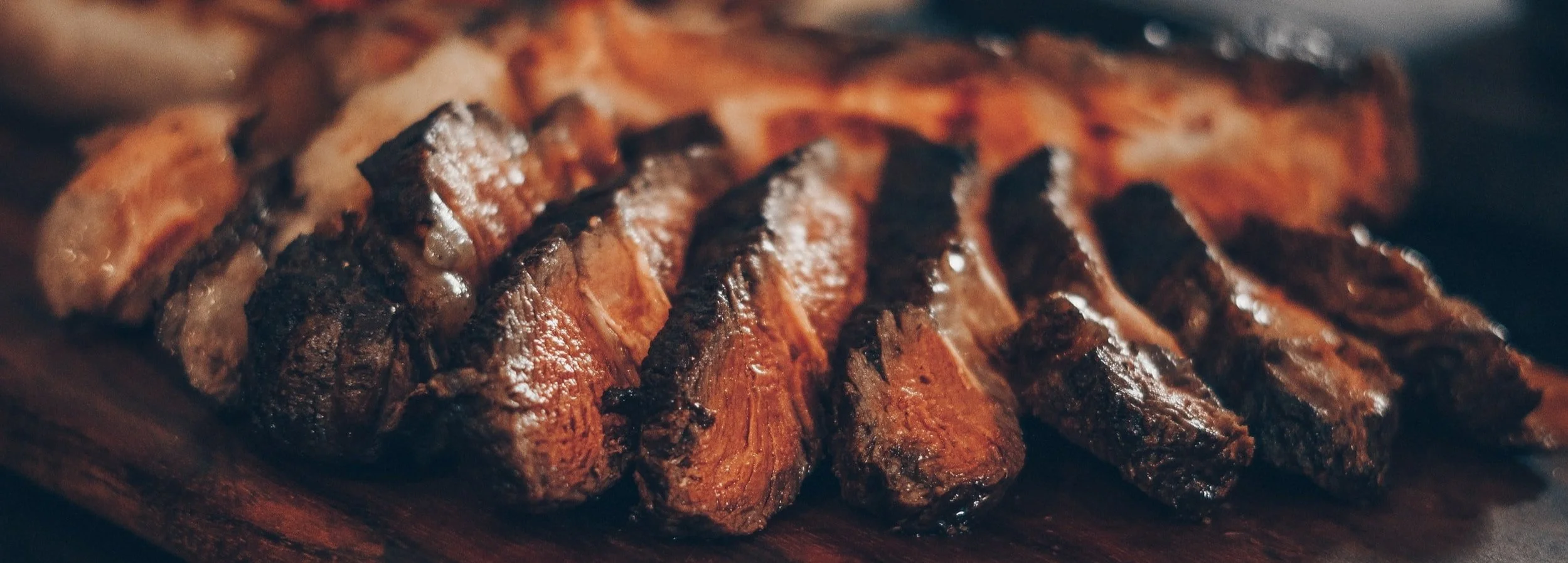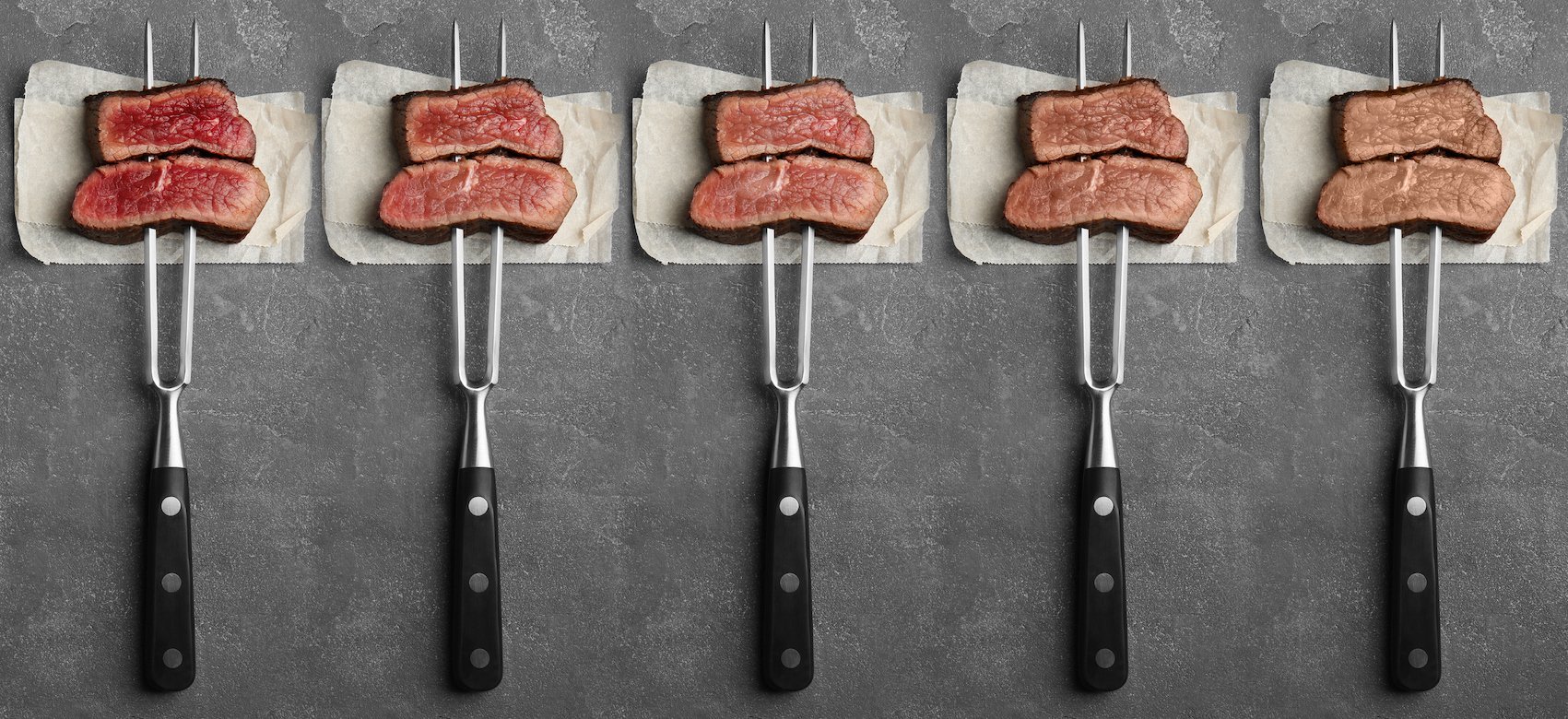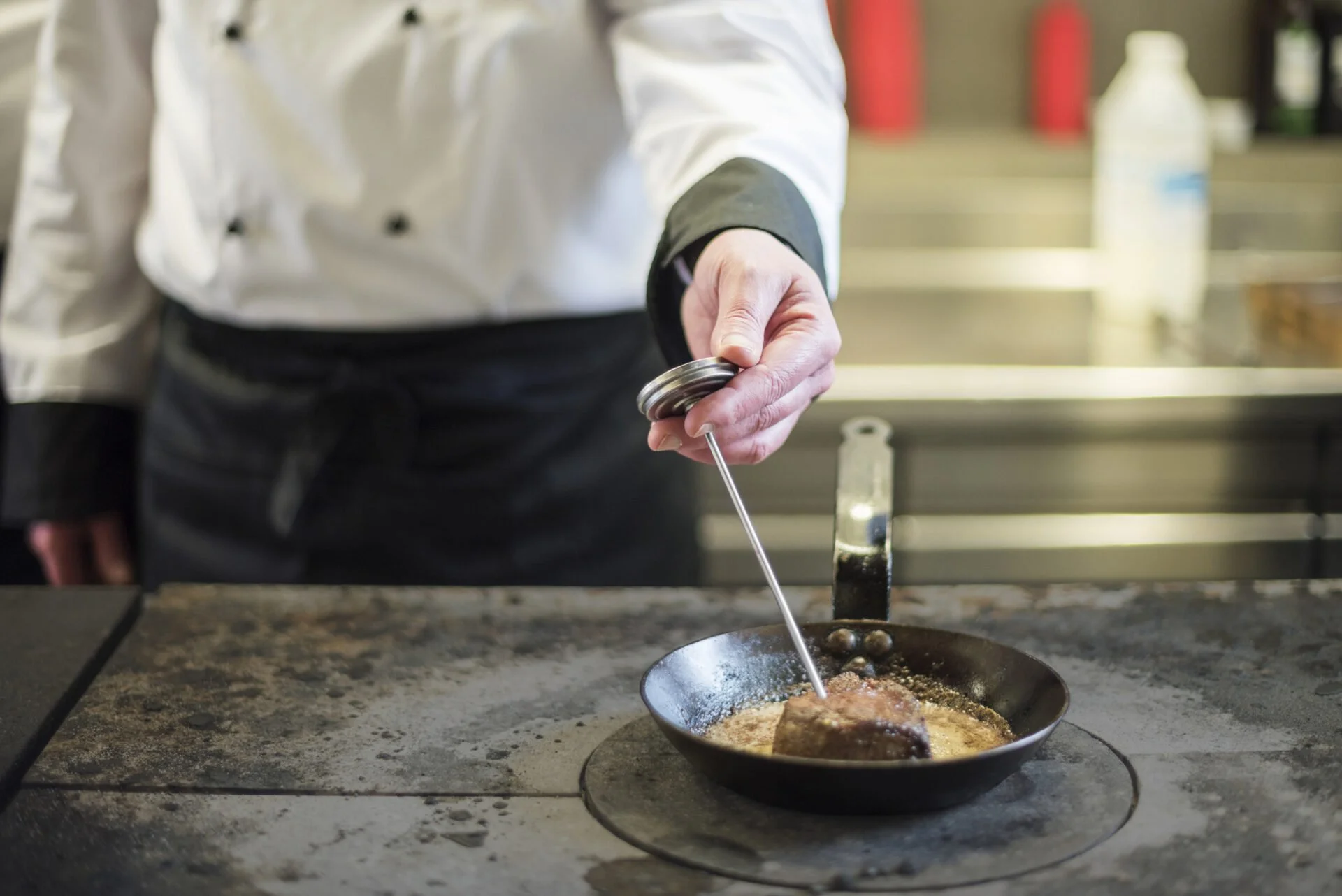The Big Texas Guide to Cooking Steakhouse Quality Steak
Discover > BBQ at Home > The Big Texas Guide to Cooking Steakhouse Quality Steak
Texans had a very long love affair with steaks. In the late 17th century the Spanish introduced cattle in the southeastern part of the state. This breed of cattle was the ancestors of the famed Texas Longhorn breed which is the state’s official large mammal.
The Spanish introduction of cattle would pave the way for the birth of the nation’s largest cattle industry, it would also herald the start of Texas’ fascination with beef (how long does beef last?) and cooking the perfect steaks.
A Little Bit of Steakhouse History
The word steak had Nordic origins, in Norse steik means a thick piece of animal meat. But Italy is considered the birthplace of steak. During the Medici era, people would congregate in a plaza in Florence for a feast to honor their patron St. Lorenzo. The feast had a bonfire where people cooked large pieces of meat.
When visiting English knights would ask the people what those meats cooked in the bonfire, the Italians would say Bistecca which they later shortened to steik so the English visitors can easily pronounce it.
Restaurant-style steaks were said to be invented in London chophouses way back in the 1600s. In 1827 the first steakhouse in the United States, Delmonico, opened in New York. Eventually, steakhouses became popular across the nation, particularly in beef-loving Texas.
Now steakhouses are among the most common restaurants here in the state. It reflects just how well we love our beef and our steaks. It is said that Texans make up about 8.9% of the nation’s beef consumption.
But you don’t need to go to steakhouses for one great piece of steak. You can cook up right in your kitchens.
What is the Secret to Steakhouse Quality Steak?
The secret to cooking steaks in steakhouse quality would rely on different factors such as cuts of meat, meat grades, seasoning, cooking styles, doneness, resting, and cutting. in this article, we'll discuss how these factors will influence your steaks.
Different Steak Cuts
Porterhouse and T-Bone
The T-bone is the most identifiable piece of steak cut as it has a T-shaped bone running through the meat. It is cut from the short loin. The T- shaped bone has two attached meats; the tenderloin located on the smaller side of the T-bone and the sirloin located at the larger side. The T-bone cut originates from a part of the cow where muscles are not that active hence it is more marbled with fat which makes it a very succulent steak, oozing with juices when cooked.
The porterhouse is differentiated from T-bone by its size. It is larger than the T-bone as it contains the thickest part of the tenderloin which can be removed from the bone and cooked as filet mignon.
Ribeye
The ribeye steak (What wine goes well with ribeye steak?) is taken from the cow's ribs section. The cut is between the shoulder or chuck and the loin. This part of the cow contains intramuscular fat, this while line marbled cut is known for its tenderness and flavor.
New York Strip Steak
The New York Strip steak comes from the cow's short loin located at the back of the rib and in front of the thigh. The cut is chewy and meaty due to its high muscle content. If it comes with a bone it is called Kansas Steak.
Top Sirloin Steak
The top sirloin cut is taken from the upper portion of the sirloin butt. When cooked the Top Sirloin steak (What wine goes well with sirloin steak?) is boneless and tender steak. Though it may not be as tender as the more expensive parts it is a flavorful steak. If cooking on a budget this cut would be a good choice.
Filet Mignon
The filet mignon cut comes from the smaller part of the beef tenderloin (What wine goes well with beef tenderloin?), mignon in French means small. It is situated at the narrow front (loin end) part of the tenderloin. It is a lean cut without marbling or connective tissue. It is not that flavorful (but it is so tender. A perfectly cooked filet mignon would melt in your mouth.
Bone in vs. Boneless Steaks
When buying steak cuts sometimes the question would be to buy bone-in (with bone) or boneless steaks.
Bone-in steaks are heavier and bring more flavor to the meat. but it takes a longer time to cook as the bone serves to insulate the side of the meat. While boneless steaks take lesser time to cook as the heat would come in every direction without the bone to insulate a portion. Experts advise letting boneless steaks rest for 10 minutes before cooking to let the seasoning or rub penetrate the meat.
Meat Grades Best for Steak
The quality of meats is a very important factor in your quest to cook the perfect steak. The United States Department of Agriculture (USDA) grading system classifies beef into Prime, Choice, Select, Standard, Commercial, Utility, Cutter, and Canner.
The quality of beef we see in supermarkets belongs to Prime, Choice, and Select classes.
Prime is the highest quality of beef. They have high marbling, are very juicy and extremely flavorful. Their high marbling makes them great for grilling and other dry cooking methods. These are perfect steaks for cooking in high heat.
Choice is a high quality of beef but less marbling than Prime. They are delicious and juicy cuts. Tender choice meats are good for grilling and other dry cooking methods while the less tender cuts would need to be cooked in a liquid-added cooking method to make them soft.
Select is a leaner, uniform quality beef. Less juicy and tender than prime and choice. It is still tender and could provide a good dining experience when cooked. Most select cuts are either marinated or braised to meet the quality of prime and choice cuts.
Standard and Commercial beef have less fat marbling thus they lack the tenderness of high quality cuts. They are sold as ungraded beef or carry the label of the store. Not recommended for cooking steaks.
Canner, Utility, and Commercial cuts are taken from older cows thus it has no marbling. They are used for canned products or for processed meat. As they lack tenderness they are not great for steaks.
Steak Seasoning vs Marinades
Now, we got our high-quality Prime beef cut in the kitchen ready for some serious cooking. But two choices beckon before we subject these expensive beef cuts to the cooking process. Do we dry rub it or do we use marinades?
Sometimes called steak seasoning, a dry rub is a blend of seasonings and spices without any liquid ingredients. Often these would consist basically of salt ( I use sea salt), pepper, and brown sugar or to add more spicy flavor you can add a little cumin, coriander, onion, or garlic powder (how long does garlic powder last?) or if you want hotness you can have cayenne. The blend gives us adequate seasoning and enhances the flavor of the meat. Dry rub works best in juicy meats and meats that retain their tenderness while being grilled.
A marinade is a liquid solution consisting of seasoning. Basically a wet version of a dry rub plus it has an acidic component such as vinegar and soy sauce (how long does soy sauce last?) that allows the liquid to penetrate the meat and is used as a tenderizer for tougher meats. It can also be used to baste the meat while cooking.
Content creator Salty Tales in his YouTube video created an experiment where he cooked two rib-eye steaks. One was dry rubbed, while the other had marinade sauce. During the taste test, the two steaks according to the two hosts were delicious but they much preferred the dry steak.
Steak Cooking Methods
There are several ways to cook the perfect steak. Each has a unique advantage and each is capable of serving you one great steak.
Cooking Steak on a Stovetop
Steaks are actually easy-to-prepare dishes. With just a few ingredients, and a single pan atop a stove, you can cook your perfect steak. The key is knowing how to pan-sear. This is a technique where you cook the steak in a very hot pan until it achieves a Maillard reaction, a chemical process that creates a golden brown flavorful crust.
According to culinary experts, pan searing is the best way to cook a steak and it is also the easiest. Steak cuts ideal for pan searing on a stovetop are boneless steaks such as filet mignon, rib eye or the New York Strip. With the proper technique you can even pull off some amazing T-bones and porterhouse steaks on stovetop!
Cooking Steak on the Grill
A favorite cooking method for steak among Texans is the process of cooking your cuts on the grill. There are advantages to cooking on the grill rather than preparing it on a stovetop.
Numero uno, it uses less oil. Grilled steak locks in moisture and lesser oil means less cholesterol intake, thus it has valuable health benefits. Grilling your steak helps in weight loss as it has less fat. Excess fat just drips unlike those steaks cooked in a pan where excess fat is just retained mixing with the oil used in cooking.
Grilling also gives steaks unique flavors. These come from fuels like wood, and charcoal which you used in grilling, this adds variations in taste. Also, grilled steaks are nutritious as the cooking preserves essential nutrients such as thiamine and riboflavin.
Cooking Steak in the Oven or Reverse Sear
Cooking reverse sear which is starting off with a low temperature has two advantages. It allows you to multitask in the kitchen. Like you might prepare the butter or the mashed potatoes while waiting for the steak to achieve your preferred doneness such as my favorite medium rare. Reverse searing a steak is a great way to ensure that your steak is cooked to perfection. The reverse sear method involves first cooking the steak at a low temperature until it is nearly cooked through and then searing it at a high temperature to finish it off. This method results in a steak that is evenly cooked throughout, with a succulent, juicy interior and a crisp, browned exterior.
To reverse sear a steak, start by preheating your oven to 250 degrees Fahrenheit. Season the steak with salt and pepper, and then place it on a rack over a baking sheet. Cook the steak in the oven for about 45 minutes, or until it is nearly cooked through.
Remove the steak from the oven, and heat a skillet over high heat. Sear the steak for 1-2 minutes per side, or until it is browned and crisp. Serve the steak immediately with your favorite sides. Enjoy!
Perfect Steak Timing
A lot of people would say to do X number of minutes per side depending on on thickness. But the reality is, perfect timing will also depend on the type of steak or cut being used.
H-E-B Recommends the following grill times for the most popular steak cuts out there:
Filet Mignon (1 inch) - For Medium Rare, grill 4 minutes per side or up to 140F internal temperature. For Medium, grill 7 minutes per side or to 155F internal temperature.
New York Strip (1inch) - For medium rare, grill 7 minutes per side or up to 140F internal temperature. For medium, grill 10 minutes per side or up to 155F internal temperature.
Ribeye (1.25inch) - For medium rare, grill 8 minutes per side, and for medium 10 minutes per side.
Sirloin (1.25inch) - Same as ribeye.
Now, these are not hard and fast rules as other factors may come into play like marbling and other stuff, the best thing to do would be to ask the experts, and that’s your local butcher!
Determining Steak Doneness
There are ways to determine your steak's doneness. Each person has its preferences for me I prefer medium rare, though very few people would like their steaks well done.
You can either determine it visually by the color of the steak's interior or by touch. I would use a meat thermometer to measure the steak's internal temperature.
Determining it Manually (Tips and Tricks)
Rare steaks have a very red color on the meat's interior, it is moist with red juices. It is very soft to touch.
Medium Rare steaks have a lighter red color on the meat's interior, it is moist, its juices are pinkish in color. The meat is soft to touch.
Medium Done steaks have a pinkish color on the meat's interior, it is moist, its juices are clear to a lighter shade of pink in color. The meat is soft and springy.
Well Done steaks have gray-colored meat interior, it is dry and no trace of juices. its meat texture is firm to touch. Or as we like to call it at home, shoe leather.
Using a Meat Thermometer
I am using a meat thermometer to determine if the steak is done according to my preference. I would stick the thermometer through the side of the cut, the tip reaching the center, the thermometer should not touch the bone or fat.
The internal temperature of each doneness would be:
120 to 130°F for rare
130 to 135°F for medium rare
135 to 145°F for medium
145 to 155°F for well done.
To Rest Your Steak or Not
Many chefs and culinary experts advised to let the steaks rest at room temperature as it keeps the juices locked in so it would be reabsorbed and redistributed across the steak. Thinner cuts would need at least five minutes of rest, while thicker meats would need at least 10 minutes.
However Famed chef and food writer Meathead Goldwyn says that steaks should be served off the grill or risk overcooking your steak from its desired doneness. As the longer the meat rests the more it cooks based on the principle of carryover cooking where the hot exterior of the meat goes to the cooler interior until an equilibrium is reached.
Personally, I love a hot steak, and any juices that may leak out is happily mopped up with a piece of bread or mixed in with any of the sides on the plate.
Cutting Your Steak
You do not indiscriminately cut your steak, there is a proper way of doing it. And one pro tip is that you have to slice against the grain or to slice perpendicularly to the direction of the meat's muscle fibers. The slices would make your steak easier to handle as it shortens the steak's fibers.
The grain lines do not uniformly run throughout the steak's cut so you have to adjust the angle of your cutting as you work your way to the steak.
Conclusion
The perfect steakhouse quality steak is actually simple and easy to do. Always remember that a great steak is determined by several factors such as the quality and grade of the meat, the type of cuts, cooking styles, rubs or marinades, and doneness (please! no well-done steaks). And if you like to experiment or innovate there is a huge wealth of culinary information online, there are blogs and YouTube videos that can help you create your perfect steak.















